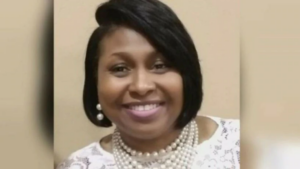My 12-year-old daughter, Jo Jo, blossoms over the summer. For her, it’s a time for camp, pool trips with friends, bonfires and dancing for hours on the beach at our town’s monthly “Sand Jams.” Last summer, she began going to the salon for monthly manicures, even getting her dirty-blonde hair highlighted with buttery chunks.
These events are a rite of passage for any preteen, but they’re particularly important for Jo Jo. She has Down syndrome, which means she has an extra 21st chromosome that has led to overall developmental delays. For her, these regular social interactions are crucial.
But this summer will be dramatically different. Like all kids, she’s been stuck at home since mid-March. Over the last couple weeks, many of those kids have started venturing out, meeting up for bike rides and beach excursions or other outdoor activities. Their parents talk about sending them to day camp, and setting up unofficial “quarantine bubbles.”
But Jo Jo and her two neurotypical brothers — Teddy, 10, and Geoffrey, 9 — remain at home, probably for the rest of the summer. Jo Jo is at high-risk for Covid-19 complication.
3 Indian Soldiers Killed in First Deadly Clash on Chinese Border in Decades
Studies suggest that death rates from pneumonia — a common Covid-19 complication — were up to 5.8 times higher in 2017 among those with intellectual disabilities. During the 2009 flu pandemic, more than 40 percent of the children who died had neurodevelopmental disorders. The Centers for Disease Control and Prevention has labeled intellectual disability as a high risk condition for flu.
An intellectual disability itself isn’t a risk factor for Covid-19 but kids with developmental disabilities often have other underlying medical conditions that could be. A recent study showed such kids are slightly more likely to die from Covid-19. Jo Jo also has Graves’ disease (a form of hyperthyroidism) and takes medicine that suppresses her immune system. A typical virus hits her hard: This winter she tested positive for the flu and ran a 104-degree fever for almost a week.
Knowing all this, it’s very tough for me to gauge if any activities — even outdoor ones — are safe for Jo Jo or her brothers, who may put her at risk. “In many ways, these last couple months, when everyone has stayed at home, was the easy part,” said Barbara Saunders, D.O., a member of the American Academy of Pediatrics’ Council on Children with Disabilities and the mother of a 16-year-old with Angelman syndrome. “Weighing when, and how, to re-enter the community without putting your child at risk is so much harder.”
In addition, many kids with intellectual disabilities depend on in-person physical, occupational and speech therapy year round to prevent regression. For example, Lisa Kinderman, a psychologist in Seymour, Ill., is grappling with whether it’s safe to resume physical therapy for her daughter, Lija. A 6-year-old with cerebral palsy, Lija cannot walk or talk and has been hospitalized twice in the last year for respiratory ailments.
Source: As the Country Opens Up, Children With Disabilities Are Getting Left Behind



Recent Comments